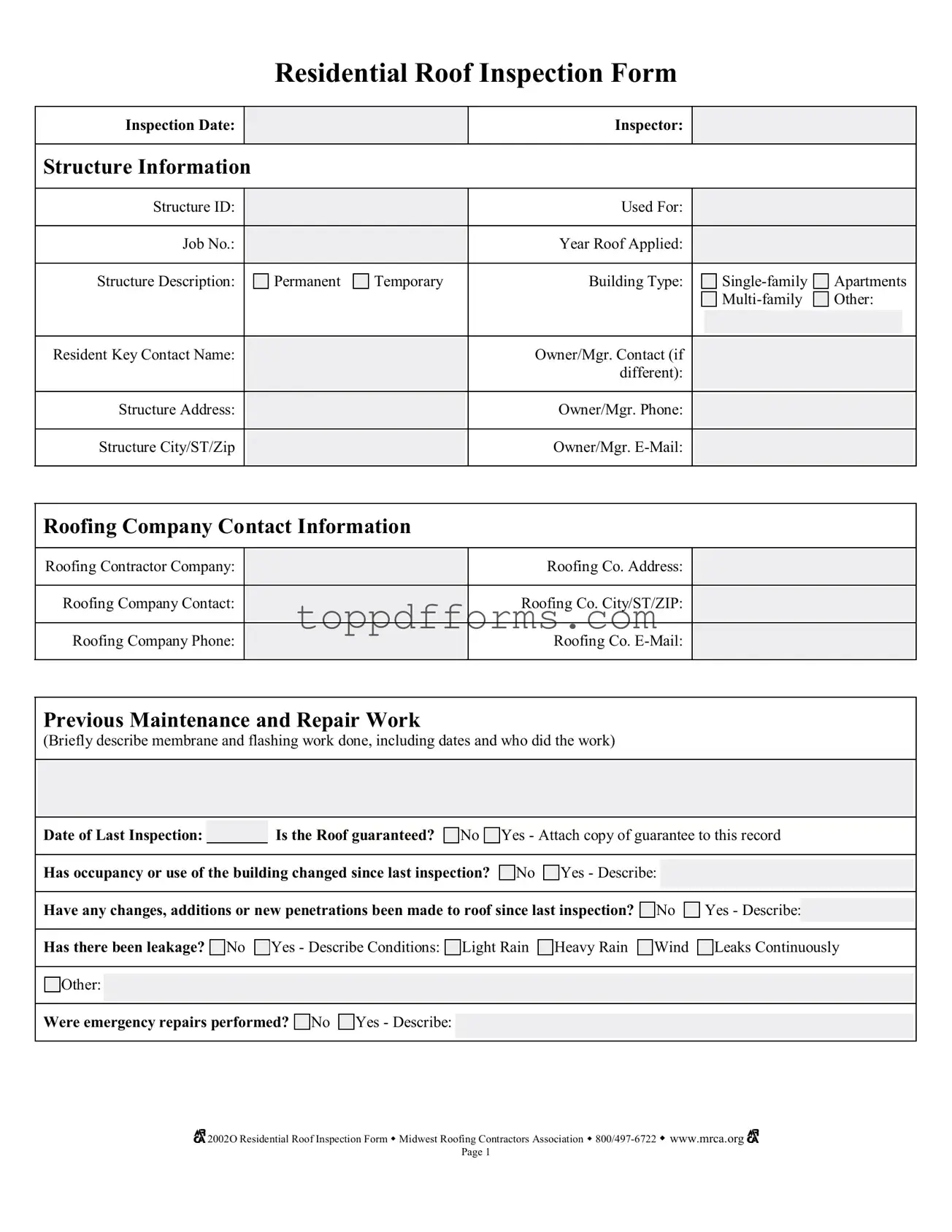What is the purpose of the Roof Inspection Form?
The Roof Inspection Form is designed to document the condition of a roof and any maintenance or repairs that have been performed. It helps ensure that all relevant information is collected systematically, allowing for better tracking of the roof's health over time. This form is essential for property owners, managers, and roofing contractors to maintain a clear record of inspections and any necessary actions taken.
Who should fill out the Roof Inspection Form?
The form should be filled out by a qualified inspector, typically a roofing contractor or an experienced maintenance professional. It is important that the person completing the form has a thorough understanding of roofing systems and can accurately assess the condition of the roof. Additionally, property owners or managers may need to provide some information, such as contact details and maintenance history.
What information is required on the Roof Inspection Form?
The form requires various details, including the inspection date, inspector’s name, structure information, and roofing company contact details. It also asks for previous maintenance and repair work, the date of the last inspection, and any changes to the building's occupancy or roof structure. Furthermore, it includes sections to describe any leaks, emergency repairs, and the overall condition of the roof and its components.
How often should a roof inspection be conducted?
It is generally recommended that roof inspections be conducted at least once a year. However, more frequent inspections may be necessary if the roof experiences severe weather, leaks, or other issues. Regular inspections help identify potential problems early, allowing for timely repairs and extending the roof's lifespan.
What should I do if the inspection reveals poor conditions?
If the inspection indicates that the roof is in poor condition, immediate action should be taken. This may involve contacting a roofing contractor to discuss necessary repairs or replacements. The form provides a section to document any actions taken, ensuring that there is a clear plan in place to address the issues identified during the inspection.
Is there a warranty or guarantee for the roof?
The form allows for documentation of any warranties or guarantees associated with the roof. If a guarantee exists, a copy should be attached to the inspection record. If there is no guarantee, it's important to note that as well. Understanding warranty details can help property owners make informed decisions regarding maintenance and repairs.
What happens if there has been leakage or damage?
In the event of leakage or damage, the form provides space to describe the conditions under which the leaks occurred. It is crucial to document these details accurately, as they will inform the necessary repairs and help prevent future issues. Emergency repairs may also need to be noted, ensuring that all actions taken are recorded for future reference.
